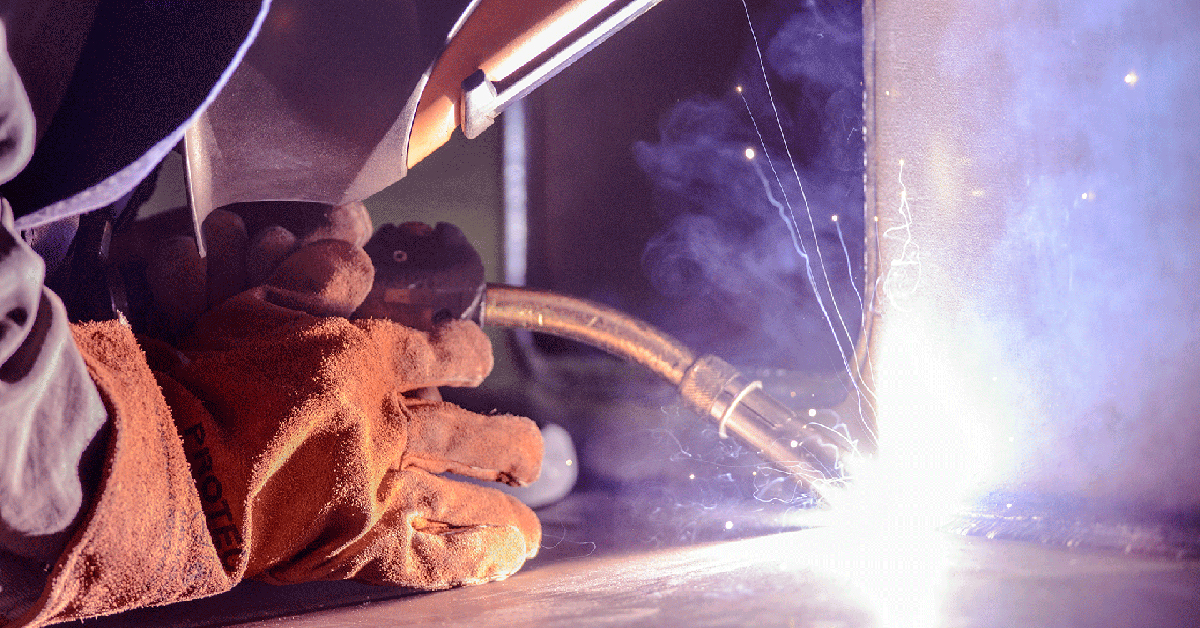Reliable Ways to Prevent Weld Undercut in Your Welding Tasks
Reliable Ways to Prevent Weld Undercut in Your Welding Tasks
Blog Article
Comprehending the Causes and Solutions for Undercut Welding in Steel Manufacture Processes
In the realm of steel construction processes, the event of undercut welding poses a substantial difficulty that requires a comprehensive understanding of its causes and sensible remedies. The complex interaction of numerous variables during welding operations can bring about this unfavorable phenomenon, impacting the structural integrity and general high quality of the bonded joints - Preventing weld undercut. By exploring the origin triggers of undercut welding and checking out effective restorative procedures, producers can elevate the standard of their workmanship and guarantee the manufacturing of flawless metal components
Common Causes of Undercut Welding
Often ignored in steel manufacture, undercut welding takes place due to numerous factors that require thorough interest and proficiency to be effectively minimized. Furthermore, improper welding techniques, such as using the wrong welding angle or take a trip rate, can additionally add to damage development. The selection of welding specifications, such as voltage, present, and cable feed rate, plays a significant function in the event of undercut welding.
Impact of Incorrect Welding Parameters
Inaccurate welding parameters can substantially compromise the integrity and top quality of welded joints in steel construction procedures. The influence of inaccurate welding specifications materializes in various means, bring about architectural weak points and defects in the welded components. One important aspect affected by improper welding parameters is the penetration deepness of the weld. Insufficient warmth input as a result of reduced welding currents or exceedingly high travel speeds can cause insufficient blend between the base metals, causing incomplete joint infiltration and compromised bonds. On the other hand, excessive heat input created by high welding currents or slow-moving traveling rates can lead to too much and burn-through support, developing a fragile and unsteady weld framework. Furthermore, wrong specifications such as inappropriate voltage setups or inaccurate electrode angles can add to erratic weld grain accounts, lack of blend, and enhanced opportunities of flaws like undercutting. Careful interest to welding parameters is vital to guarantee the manufacturing of top quality welds with the wanted mechanical residential properties and architectural integrity.
Impact of Improper Lantern Angle
Inappropriate lantern angle in welding operations can considerably impact the top quality and honesty of the last weld joints in metal fabrication procedures. Damaging is a typical welding problem where a groove forms along the weld toe, damaging the joint and endangering its structural integrity.
A lantern angle that is as well steep can lead to insufficient infiltration, insufficient fusion, and increased spatter. On the various other hand, a lantern angle that is as well shallow can result in too much penetration, burn-through, and distortion of the base material. Preventing weld undercut. Correct lantern angle is vital for guaranteeing regular weld top quality, stamina, and look
To avoid undercutting and other issues triggered by improper lantern angles, welders should be educated to preserve the correct lantern angle throughout the welding process. Normal tracking and adjustment of lantern angles during welding can assist achieve audio welds with minimal issues.
Function of Inadequate Welding Strategies

One more element of insufficient welding techniques is improper weld preparation. Inadequate cleansing of the base steels, wrong joint style, or inadequate edge preparation can all add to damage welding. Insufficient protecting gas coverage or using the incorrect type of gas can result in incomplete blend and the development of undercut problems.
To address the duty of insufficient welding methods in steel manufacture processes, it is vital to offer thorough training for welders. Proper education and learning on welding specifications, joint preparation, and securing gas selection can aid avoid undercut welding and ensure high-grade welds in metal manufacture jobs.
Reliable Solutions for Undercut Welding
Attending to undercut welding in metal manufacture requires applying efficient solutions to improve weld quality and architectural integrity. One of the key options to combat undercut is to change welding parameters such as voltage, present, and take a trip speed to make certain proper warmth input and combination. By fine-tuning these settings, welders can stop excessive melting of the base metal and filler product, decreasing the probability of undercut formation.
Furthermore, correct joint preparation is vital in preventing undercut. Making sure tidy base metal surfaces cost-free of contaminants and utilizing the ideal bevel angle can help promote much better weld infiltration and reduce the risk of undercut - Preventing weld undercut. Utilizing ideal welding strategies, such as description weaving or oscillating the torch, can additionally assist in distributing heat uniformly and filling up the weld joint adequately, reducing the possibility of undercut flaws
In addition, picking the correct welding consumables, including electrodes and filler steels, is necessary in mitigating undercut. Using materials with suitable chemical structures and mechanical residential properties can add to attaining audio welds with marginal undercut. Normal inspection and quality assurance measures should also be implemented to spot and deal with undercut problems quickly, guaranteeing the overall integrity of fabricated steel parts.

Verdict
Finally, comprehending the causes and services for undercut welding in metal manufacture procedures is vital for accomplishing premium welds. By dealing with common reasons such click here to read as wrong welding specifications, improper lantern angle, and poor welding methods, welders can avoid damaging and make certain strong, resilient welds. It is vital to take notice of these aspects and execute effective remedies to enhance the overall welding procedure and end product high quality.

Report this page